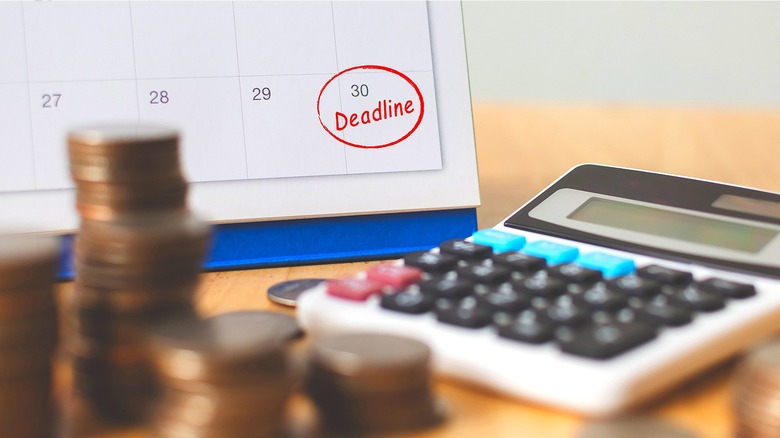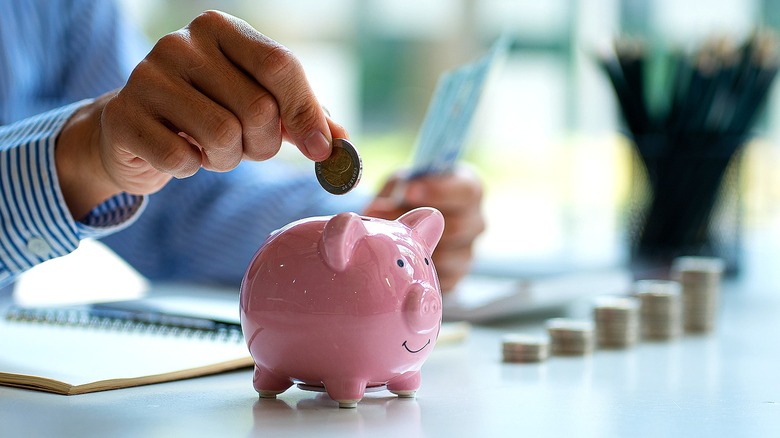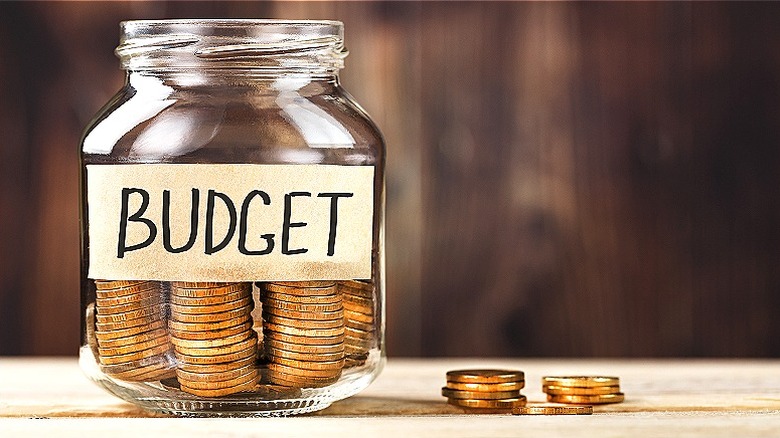Try This Genius 30-Day Savings Rule And Your Bank Account Will Thank You
We all know that feeling of instant gratification that can accompany an impulse purchase; that is, purchases you didn't intend on making when you entered the store (in person or online). However, because they aren't planned, impulse purchases can have an immediate impact on our budgets. So, before you succumb to your next impulse buy, consider a savings strategy instead: the 30-day rule. The 30-day rule is something of a cooling-off period to determine if you really want or need that nonessential impulse purchase after the initial emotion wears off.
Impulse buys are why retailers often place items, such as snacks and soft drinks, near the checkout counter or kiosks, hoping you will be hungry or thirsty and grab one more item on your way out. In fact, according to the journal Frontiers in Psychology, a whopping 40% to 80% of all purchases are impulsive, which can be devastating to your personal finances. An impromptu candy bar or energy drink is one thing, but what about a questionable piece of jewelry or a pricey electronic gadget?
How the 30-day savings rule works
The 30-day rule — aka the 30-day savings rule — is easy to follow. Before you commit to buying that nonessential item you're considering, shut down your browser window or leave the physical brick-and-mortar store. Not only does forcing yourself to wait (30 days) serve as proof that you want or need the item badly enough, but you'll also be able to save up and designate some money to buy it rather than busting out a credit card.
Granted, lower-priced items might not require saving at all, but you'll benefit by squirreling money away for larger purchases during the 30-day wait period. That'll avoid potential credit card interest if the impulse buy is charged and not immediately paid off. You might also consider setting up a separate savings account to store the funds for your impulse purchase(s). That way, if you don't make the purchase after all, you'll have a nice little nest egg forming.
With the Federal Reserve hiking interest rates to combat inflation, high-yield savings accounts exist that pay interest rates of 5% or more on your money, risk-free. Those types of rates haven't been available since the 1990s, so it's a great time to get started saving. If you still want to purchase the item after 30 days, then go for it — it's probably a worthwhile purchase, after all.
Tips to start saving for a future purchase
If you're wondering where to start saving for that future nonessential item or perhaps something else like a vacation, we have some suggestions. One tried-and-true method is to deposit any coins you receive as change from a transaction into a jar. Some savers have taken this concept one step further with the "$5 challenge," which requires participants to stash away every $5 bill they receive as change. Whatever method you choose, do empty that piggy bank into an interest-bearing bank account every now and then. Not only will your savings earn money that way, but you won't be tempted to raid it.
Granted, these initial savings suggestions involve cash transactions, which are becoming increasingly rare nowadays. Alternatively, you can try the "kick a bad habit" challenge, which involves quitting expensive behaviors like smoking, consuming alcohol, or buying coffee every day. We're not suggesting you stop drinking coffee altogether, mind you, but you can save some serious money making it at home before setting out for the day.
Another challenge to bolster your targeted savings account(s) is to stay away from restaurants for an entire month (i.e., 30 days). The U.S. Bureau of Labor Statistics reports that in 2022, the average American household spent around $3,600 per year dining out, so savings in this area can really add up quickly. As a bonus, you might even learn you enjoy cooking. Also, rather than dining out on the regular, you can wait until you're on that vacation you've been eyeing — and saving for.


